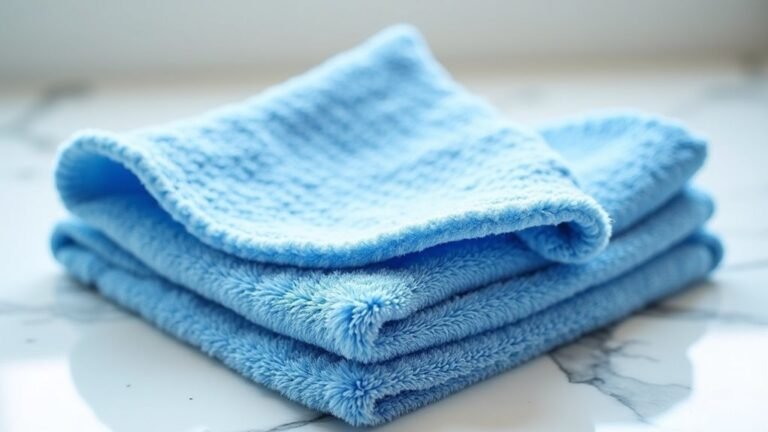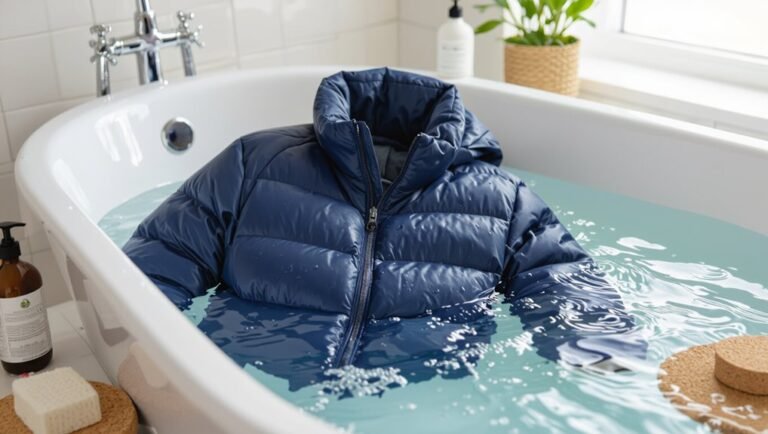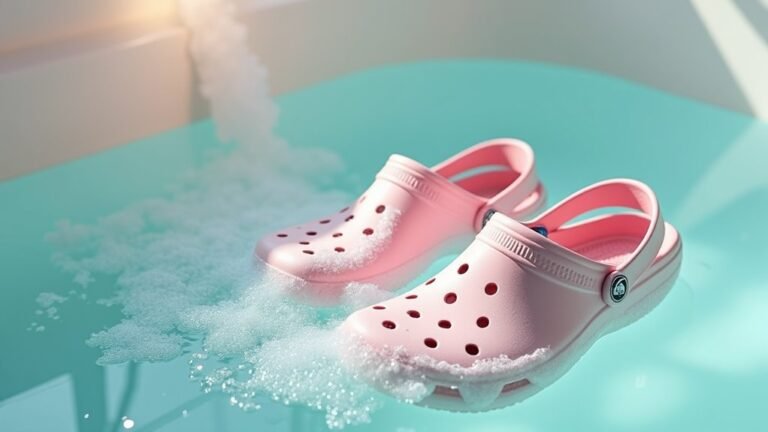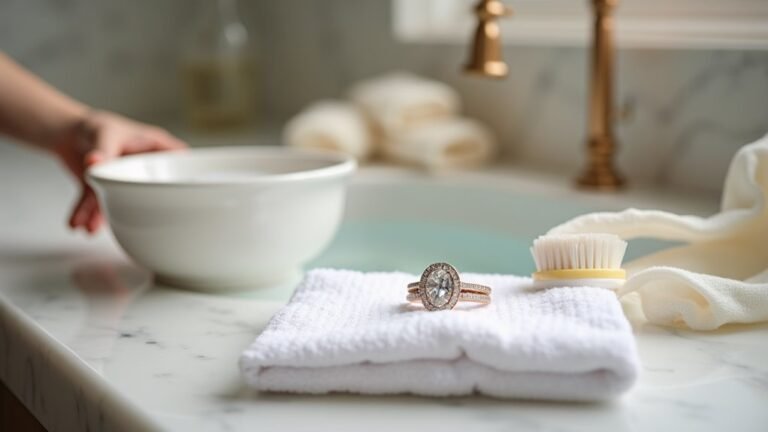Microfiber couches attract spills and stains like a magnet, and we need to clean them often to keep them looking fresh and welcoming. We've all had those clumsy moments when drinks spill or food drops right onto our favorite spot to sit. While microfiber is tough and that's why many people choose it for their furniture, its special fabric needs the right kind of cleaning to stay nice.
Some of the links in this article may be affiliate links. If you make a purchase through these links, we may earn a small commission at no extra cost to you. Thank you.
According to Ashley Abramson, a home care expert writing for The Spruce, "Microfiber's tight weave helps it resist stains and wear, but it can also trap dirt and oils if not cleaned properly."
Let's look at the best ways to clean those tough spots and make your couch look like new again.
Care Instructions Matter Most
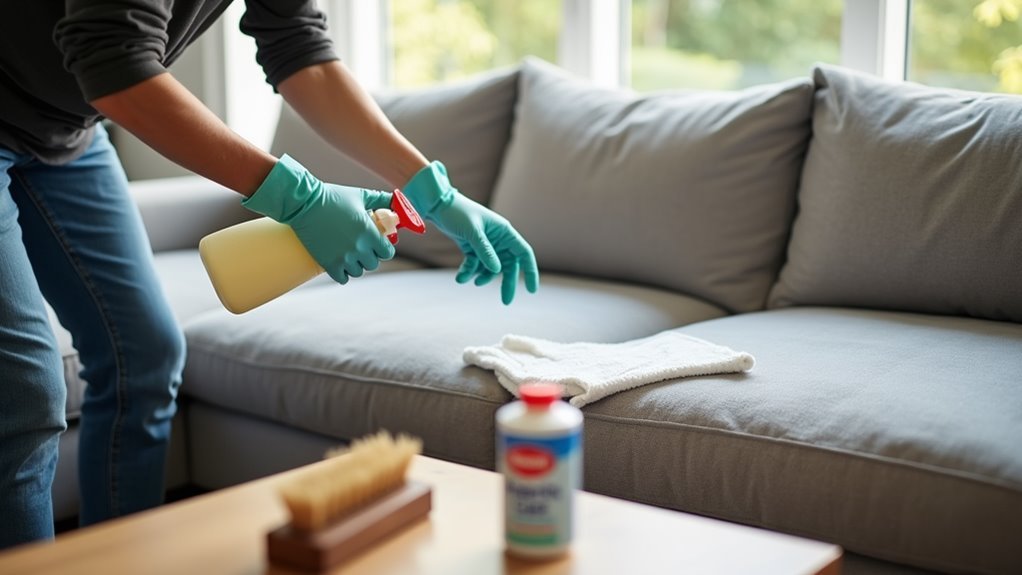
Before you tackle any cleaning project on your microfiber couch, we'll need to check those care instructions carefully.
Look for the care tag and its cleaning code: "W" means water-based cleaners are safe to use, "S" indicates solvent-based cleaners only, and "X" permits just vacuuming.
When there's no tag, we recommend testing solvent-based cleaners on an inconspicuous area first to protect your fabric's longevity.
Let's look at what works and what doesn't when cleaning your microfiber couch, including essential steps to keep it looking fresh.
We'll cover the must-do practices, like checking care codes and using appropriate cleaning solutions, alongside common mistakes to avoid, such as oversaturating the fabric or using harsh brushes.
Following our practical tips and step-by-step guide will help you maintain your couch's appearance while protecting its durability for years to come.
Things to Do When Cleaning a MicroFiber Couch
Cleaning a microfiber couch requires careful attention to the manufacturer's cleaning code and proper technique to maintain its appearance and durability. The cleaning code, typically found on the couch's tag or care instructions, serves as your guide for selecting the appropriate cleaning method and solutions to use, preventing potential damage to the fabric.
- Check cleaning code (W, S, or S-W) – Determines whether to use water-based or solvent-based cleaners
- Vacuum thoroughly – Remove loose dirt, crumbs, and debris from all surfaces, including crevices
- Spot test cleaning solution – Apply cleaner to a hidden area first to verify colorfastness
- Treat stains immediately – Use appropriate cleaning solution based on the code and blot, don't rub
- Clean systematically – Work in small sections, moving from top to bottom
- Allow complete drying – Prevent mildew by confirming fabric dries thoroughly
- Brush surface – Restore texture with a soft brush using circular motions
- Regular maintenance – Vacuum weekly and address spills promptly to prevent staining
- Use proper tools – Soft cloths, gentle brushes, and code-appropriate cleaning solutions
- Avoid oversaturation – Use minimal liquid to prevent water marks and prolonged drying time
Things to Avoid When Cleaning a MicroFiber Couch
When cleaning a microfiber couch, it's essential to understand what practices can potentially damage your furniture to guarantee its longevity and maintain its appearance.
Improper cleaning methods can lead to permanent damage, discoloration, or deterioration of the fabric, ultimately reducing the lifespan of your investment and compromising its aesthetic appeal.
Excessive water usage – Can create unsightly water rings and potentially damage the fabric's backing.
Direct application of cleaners – Leads to oversaturation and potential staining of the fabric.
Harsh chemical cleaners – Break down fibers and compromise the couch's structural integrity.
Vigorous scrubbing – Damages fiber structure and can create worn or discolored patches.
Steam cleaning – High heat and moisture can warp fabric and damage the underlying structure.
Heavy-duty brushes – Can cause pilling and break down the delicate microfibers.
Bleach or chlorine products – Cause discoloration and weaken the fabric.
Oil-based cleaners – Leave residue and create difficult-to-remove stains.
Undiluted cleaning solutions – Too concentrated and can cause fabric deterioration.
Heat-based drying methods – Can melt or damage the synthetic microfibers.
Steps
Cleaning a microfiber couch requires careful attention to the manufacturer's cleaning code and proper technique to maintain the fabric's integrity.
The cleaning process involves removing surface debris, identifying the appropriate cleaning solution based on the care tag, and applying the solution in a way that won't damage the delicate microfiber material. When done correctly, this method can effectively remove stains and restore the couch's appearance without compromising its texture or durability.
Step 1: Vacuum the entire couch thoroughly, including crevices and under cushions.
Step 2: Locate and check the cleaning code on the care tag (W, S, W-S, or X).
Step 3: Prepare the appropriate cleaning solution based on the code (soap and water for W, rubbing alcohol for S).
Step 4: Test the cleaning solution on a hidden area of the couch.
Step 5: Apply the cleaning solution using a soft brush or cloth in circular motions.
Step 6: Blot the cleaned areas with a clean, damp cloth if using water-based solutions.
Step 7: Allow the couch to air dry completely.
Step 8: Brush or vacuum the dried fabric to restore its texture.
Final Thoughts
Maintaining your microfiber couch doesn't have to be an intimidating task once you've mastered the proper cleaning techniques.
Whether you're spot cleaning with water-based or solvent-based solutions, regular cleaning will extend your couch's life.
Remember to always check the care label, treat stains promptly, and allow proper air dry time.
With baking soda for odors and consistent maintenance, we can keep our microfiber couches looking fresh.

Keeping your microfiber couch clean doesn't have to be an intimidating task. By following the proper cleaning methods based on your couch's care label and maintaining a regular cleaning schedule, you can extend the life and beauty of your furniture.
Remember to always vacuum weekly, address spills immediately, and use the appropriate cleaning solutions for your specific microfiber type. With these simple maintenance steps and proper spot-cleaning techniques, your microfiber couch can remain fresh, comfortable, and inviting for years to come.
Take action today by checking your couch's cleaning code and stocking up on the right cleaning supplies. Start with a thorough vacuum and tackle any existing stains using the methods we've discussed.
Your couch—and everyone who sits on it—will thank you for the extra care and attention.



